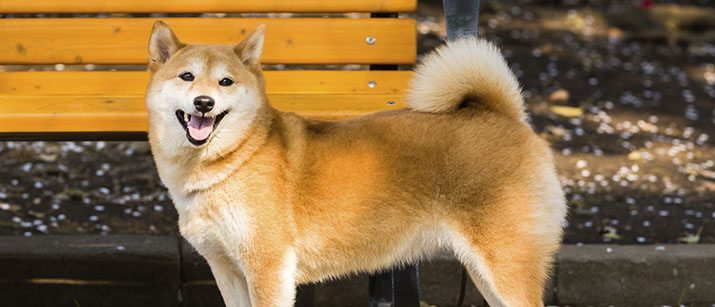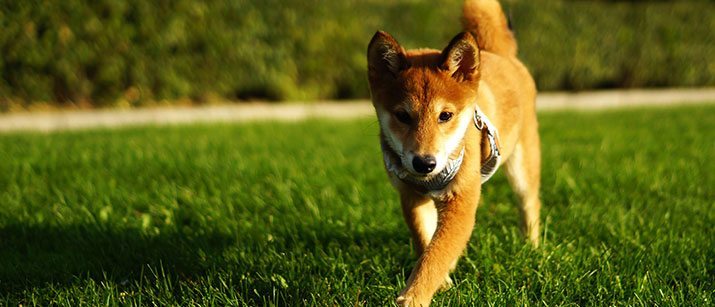Everything You Need to Know Before Adopting a Shiba Inu
The ancient Shiba Inu from Japan is compact, agile and independent, and was originally a hunting dog.
Shiba Inu have a thick double coat that is excellent for colder climates. They are a type of Spitz dog thought to originate from the Arctic region and are the smallest of the original Spitz (not including Pomeranians).
Their temperament is spirited and they will need to be socialized early and may not be suited to families with young children, though this is entirely dog dependent. Their hunting past means they do like to chase and are not always good around other small pets.
WHAT DOES THE SHIBA INU WANT IN THEIR PERFECT LIFE PARTNER/FAMILY?
I would love to live with someone who has time to spend with me, though I do have an independent nature and am happy to spend time alone. Be prepared to have many people stop to admire me on our walks, as I am indeed beautiful. I do like to be clean and make an ideal apartment pet.
AT A GLANCE
| Lifespan | 12-15 years |
| Weight | 8-10 kg (17-22 lb) |
| Height (at shoulder) | 33-43 cm (13-17 in) |
PERSONALITY
Stubborn/strong-willed – Shiba Inu are known to be a little stubborn at times. They can be easily trained if motivated and only positive training methods are used, but they will often have a mind of their own.
Courageous – No one ever told the Shiba Inu that they are small. They will often take on much bigger dogs and will rarely back down if challenged. They can also be a little timid if not socialized when young and these dogs must be carefully watched around small children.
Loyal – A Shiba Inu will often bond very closely to one person in the family and be extremely loyal. This can translate to a dog that is not suited to long periods of being alone and perhaps even a bit snappy if not socialized appropriately.
EXERCISE & TRAINING
| Exercise Requirements | High – 1-2 hours per day |
| Training Requirements | High – 1-2 hours per day |
| Apartment Friendly? | No |
Shiba Inu can be amazing athletes and you will need high fences and a secure backyard. Early socialization and training is essential to avoid aggression problems and to tame this independent breed. You will also need to be prepared for a dog who most likely won’t be able to spend time off-leash due to their chase instinct and independent spirit.
GROOMING
| Trips to the Groomer | No – easy care at home | |
| Tick Friendly? | No | |
| Hypoallergenic | No | |
| Brushing | High – Daily brushing required | |
| Hair fall | High Shed – you will be living with lots of hair | |
| Coat Type | Long and thick |
Shiba Inu have a double, insulating coat that needs lots of brushing. They also shed and are not suited to very warm climates.
FAMILY SITUATION
| Good With Kids | Poor – may not be good with kids (dog dependent) | |
| Good With Other Small Pets | Low – Strong prey drive, best kept separate from other smaller species | |
| Sociability | Low – Okay as an only dog. |
Shiba Inu are very independent and can live alone happily, though they will need games and puzzles and lots of exercise to keep them busy.
EXPENSES
| Overall Expenses (Annual) | Low $1000-$1500 | |
| Veterinary Expenses (Annual) | Low – $100-$300 | |
| Food Expenses (Weekly) | Low (toy and small) – $5-$10 |
Shiba Inu do not tend to be costly dogs to own, as they are robust and rarely get health problems. They do not cost a lot to feed. Buying a Shiba Inu, however is a different story altogether, this rare breed can be difficult and costly to acquire.
HEALTH & WELLBEING
MAJOR HEALTH CONCERNS
Cataracts – these early-onset cataracts can occur in dogs around 1-2 years of age and are distinct from the cataracts that occur in elderly pets.
Hip Dysplasia – Shiba Inu are prone to hip dysplasia, and while more breeders are hip scoring in an attempt to breed out this devastating disease, in some cases it can still occur, particularly with overfeeding at a young age.
Luxating patella – Shiba Inu often have knee caps that pop in and out, sometimes with no pain, but in a relatively small number of cases they need surgical correction.
PREVENTATIVE CARE & WHAT TO LOOK FOR:
Ask your vet to examine your dog closely for hip dysplasia and luxating patella signs, particularly while your dog is being desexed and ensure you use a reputable breeder if using one to obtain your new dog.
Small breed dogs often get significant dental disease, sometimes through poor diet and lack of chewing, but also simply due to genetic factors. Implementing daily brushing, diets that involve chewing and perhaps water additives can help.
BREED ORIGIN AND INTERESTING FACTS
Shiba Inu were originally used for hunting small birds. They are extremely popular in Japan and it is thought that this ancient breed could have immigrated to Japan with the original settlers.
‘Inu’ means dog in Japanese, so the name Shiba Inu means ‘Brushwood dog’, possibly due to the colour of the coat.
The most famous Shiba Inu is Kabosu from the Doge meme.
RESCUE A SHIBA INU
Petfinder lists all types of dogs who need homes, both purebred and mixed breeds, adults and puppies.
The ASPCA often has Spitz type dogs for adoption; just do an advanced search on their adoption page.
MORE RESOURCES
National Shiba Club of America – The National Shiba Club of America (NSCA) is the national organization which promotes and standardizes the description of the Shiba Inu.
Shiba Inu Canada – Shiba Inu Canada is a group of dedicated breeders and owners who formed this club to protect and advance the interests of the breed.
The post Everything You Need to Know Before Adopting a Shiba Inu appeared first on VetBabble.





Post a Comment